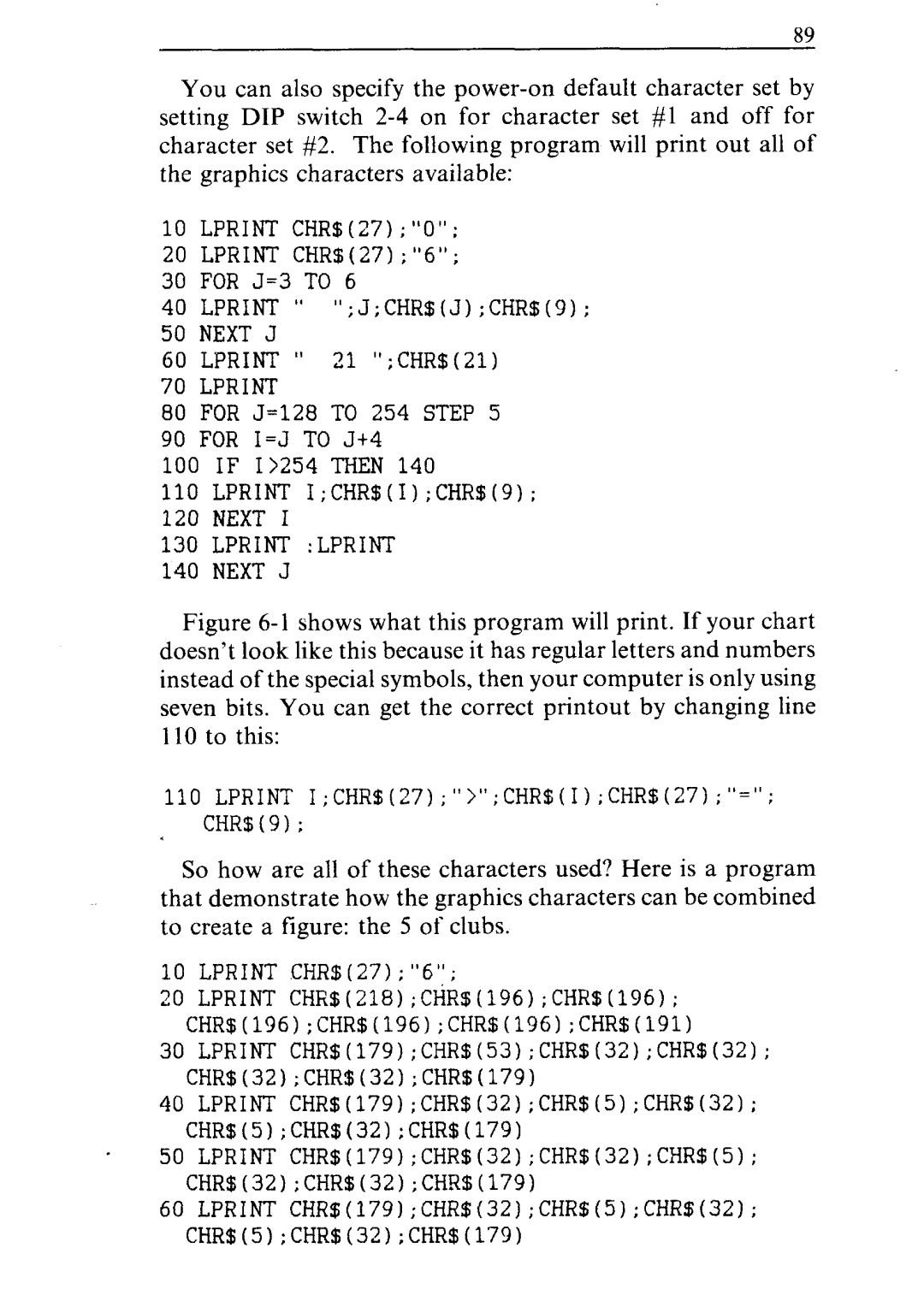89
You can also specify the power-on default character set by setting DIP switch 2-4 on for character set #l and off for character set #2. The following program will print out all of the graphics characters available:
10LPRINT CHR$(27) ; “0” :
20LPRINT CHR$(27) ;“6”;
30FOR J=3 TO 6
40LPRINT ” “;J;CHR$(J);CHR$(9);
50NEXT J
60LPRINT ” 21 “;CHR$(21)
70 LPRINT
80FOR J=128 TO 254 STEP 5
90FOR I=J TO Jt4
100IF I>254 THEN 140
110LPRINT I;CHR$(II;CHR$(9);
120NEXT I
130LPRINT :LPRINT
140NEXT J
Figure 6-l shows what this program will print. If your chart doesn’t look like this because it has regular letters and numbers instead of the special symbols, then your computer is only using seven bits. You can get the correct printout by changing line
110 to this:
110LPRINT I;CHR$(27);“>“;CHR$(I);CHR$(27);”=”; CHR$(9);
SO how are all of these characters used? Here is a program that demonstrate how the graphics characters can be combined to create a figure: the 5 of clubs.
10 LPRINT CHR$(27) ; “6’; ;
20 LPRINT CHR$(218I;CHR$t196I;CHR$(196); CHR$(196);CHR$(196);CHR$o;CHR$(191)
30 LPRINT CHR$(179);CHR$(53);CHR§t32);CHR$(32) CHR$(32);CHR$(32);CHR$(li’91
40 LPRINT CHR$(179);CHR$t32);CHR$(5);CHR$t32); CHR$(5);CHR$(32);CHR$(179)
50 LPRINT CHR$(179);CHR$t32);CHR$(32);CHR$(5); CHR$(32);CHR$(32);CHR$(179)
60 LPRINT CHR$(1791;CHR$(32I;CHR$(5);CHR$(32); CHR$(5);CHR$(32I;CHR$(l’79)

